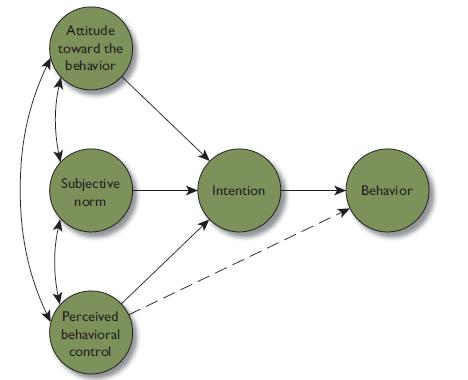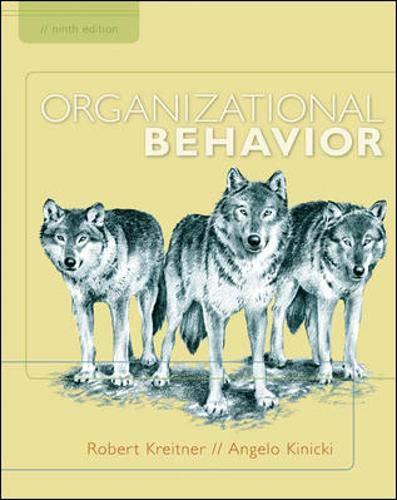CEOs may have cut back sharply on management consulting in the last downturn, but thats not stopping
Question:
CEOs may have cut back sharply on management consulting in the last downturn, but that’s not stopping Bain & Co.’s worldwide managing director, Steve Ellis, from doing the same thing Bain did during the dotcom bust: hiring. He’s adding consultants in hot-growth areas such as emerging markets and corporate turnarounds, and he’s more aggressively targeting former consultants who went to financial-services firms and are now “stranded.”
Plus, despite expectations that 2009 will be a challenging year for consulting, he’s pushing full speed ahead in recruiting from an MBA class that suddenly has far fewer options. “This is a huge opportunity to grab very talented people,” says Ellis.
For many managers, recessions prompt a near autonomic reflex: Hunker down, reduce head count, and cut every cost you can. While a certain dose of those bitter pills is unavoidable, smart leaders see downturns as having plenty of upside, too. Talent is cheaper.
Companies can gain market share as others cut back. And savvy investments give bold players a head start when the economy picks up. Nowhere is that truer than in the care and feeding of employees. Even amid a hiring freeze or a workforce reduction, there are ways to engage top workers. As the housing market crumbled, Home Depot cut jobs in its corporate offices. It also closed 15 locations. Still, Chairman and Chief Executive Frank Blake wanted to boost morale and set realistic goals. In addition to extending restricted stock grants to assistant store managers, he lowered sales and profit targets that hourly employees have to meet to receive bonuses. As a result, says Marvin Ellison, Home Depot’s new executive vice-president for U.S. stores, the highest percentage ever of in-store employees got bonuses in the first half of this year. “We still challenged people to hit some pretty tough numbers,” Ellison says.
Keeping people focused amid mounting layoffs often requires a more emotional approach. Talking about the company’s nonfinancial goals can help prevent productivity from grinding to a halt as anxious employees await their fate. And once cuts are made, managers need to take time to discuss them and why they happened.
Ignoring the matter, says Christopher Rice, president and CEO of leadership consulting firm BlessingWhite, creates an atmosphere that’s “like the most awkward Thanksgiving dinner. And it doesn’t go away.”
Amid pressure to downsize, it’s easy to forget that talent retention is a critical concern during a recession.
Michael Kesner, a principal at Deloitte Consulting’s human capital practice, notes that “companies who took advantage of employees in past downturns were rewarded with people bailing when things turned around.” To avoid that, some of Kesner’s clients are adding more weight to factors employees can control—such as customer satisfaction scores or production levels—when deciding on bonuses. Others are creating discretionary bonus pools to reward poachable stars. And with some 63% of companies reporting that all or most of the stock options they’ve granted in the past five years are underwater, according to a Deloitte survey of 151 companies, a few are considering the controversial step of repricing or exchanging them.
Compensation research firm Equilar reports that 23 companies have done so since the beginning of the year, including R.H. Donnelley and software maker VMware.
Plain, Unvarnished Communication There are other ways to make employees feel valued.
Consider Best Buy, which has watched its stock plummet 40% over the past month and announced it will hire fewer seasonal employees amid a dismal holiday shopping outlook.
One way the company has also tried to keep employees engaged is by setting up online surveys to solicit ideas for cutting costs. Some 900 ideas have emerged since the surveys were sent out three weeks ago. A couple of them: save shipping costs by consolidating distribution of in-store signs and use a computerized phone system to schedule service calls. As John Pershing, Best Buy’s executive vice-president for human capital, says: “When you know you can make a difference and you’re part of a solution, it can change your mind completely.”
Indeed the best strategy for managing talent, in good times and bad, remains plain, unvarnished communication.
“People are looking for reassurances, for transparency, and they’re not looking for surprises,”
says Edward E. Lawler III, director of the Center for Effective Organizations at the University of Southern California. A CEO town hall meeting is fine, but it’s no substitute for reassurances from managers further down the line. Says Jon R. Katzenbach, a senior partner and founder at consultant Katzenbach Partners: “If you’re scared and your worried about your job, hearing the CEO telling you things are good isn’t nearly as effective as (hearing it from) the person you have respect for because you’ve worked with them all along.”
That said, symbolic gestures from CEOs can help employees feel that everyone is sharing the pain. JetBlue Airways CEO David Barger has cut back across the board over the past year—delaying aircraft orders, trimming head count through voluntary unpaid leaves, even shedding the free pillows from his planes. In July he cut his own salary, from $500,000 to $375,000 for the year.
“There’s an awful lot of pain that’s taking place across the industry,” says Barger. “It was just the right thing to do.”
Questions for Discussion
1. Which of Schwartz’s 10 values are driving the behavior of managers at Bain & Co., Home Depot, and Best Buy? Provide examples to support your conclusions.
2. How would you describe Steve Ellis’s affective, cognitive, and behavioral components of his attitude toward managing in a recession? Be specific.
3. How are Home Depot and Best Buy trying to increase employee involvement?
4. Use Ajzen’s theory of planned behavior (Figure 6–3) to analyze how managers can increase employee performance during a recession. Be sure to explain what managers can do to affect each aspect of the theory.
Figure 6-3

5. Based on what you learned in this chapter, what advice would you give to managers trying increase employees’ organizational commitment and job satisfaction in a recession? Be specific.
Step by Step Answer:






